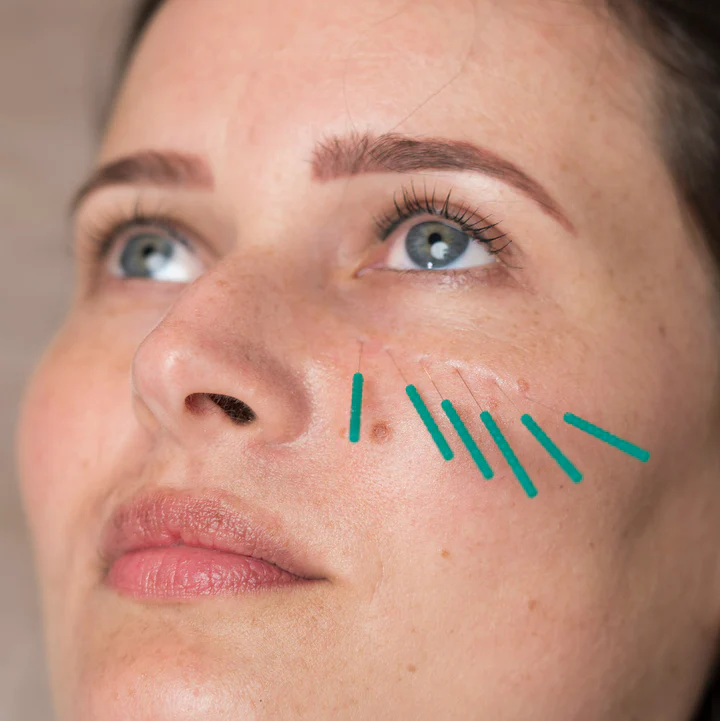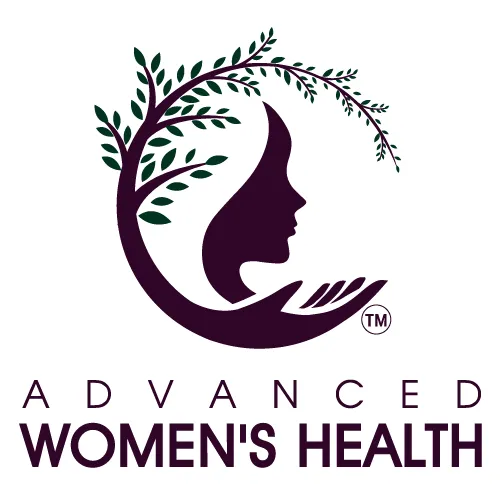How Does Facial/Cosmetic Acupuncture Work?
Forget botox, forget surgery – acupuncture is a natural and simple technique to address crows feet, bags under the eyes, drooping eyelids, furrowed brows and more. Facial acupuncture treatments are based on the principles of traditional Chinese medicine (TCM) and are believed to promote overall health and well-being while addressing specific concerns related to the overall health of the individual.
Needling Technique: The acupuncturist carefully inserts very fine needles into specific points on the face, as well as other parts of the body. These points may include areas around the eyes, cheeks, forehead, and jawline. The needles used in facial acupuncture are much smaller and finer than those used in traditional body acupuncture.
Increased Blood Flow: The insertion of needles also promotes local microcirculation, which can enhance blood flow to the face. Improved blood circulation brings oxygen and nutrients to the skin cells, facilitating their rejuvenation and enhancing the skin’s appearance.
Collagen and Elastin Production: Facial acupuncture is thought to stimulate the production of collagen and elastin, which are proteins that provide structural support to the skin. These proteins help maintain its firmness, elasticity, and overall youthfulness. The microtrauma caused by the needles is believed to trigger the body’s natural healing response, including the production of these beneficial proteins.
Muscle Relaxation: Some acupuncture points targeted during facial acupuncture are associated with specific facial muscles. By needling these points, the treatment can help relax tense facial muscles, potentially reducing the appearance of fine lines, wrinkles, and facial tension.
Lymphatic Drainage: Facial acupuncture may also support lymphatic drainage, helping to reduce facial puffiness and promote a healthier complexion. By stimulating the lymphatic system, toxins and excess fluid can be flushed away, contributing to a more refreshed appearance.
Qi Stimulation: According to TCM theory, the body’s vital energy, known as “Qi,” flows through meridians or pathways. By inserting needles into specific points, facial acupuncture aims to stimulate the flow of Qi and balance its energy throughout the body. In this way, it is believed to address underlying imbalances that may contribute to the ageing process.
How Many Treatments are Required for Facial Acupuncture to Work?
While you may notice a shift after 1-2 treatments, facial acupuncture is typically performed in a series of sessions to achieve the best results. The number of sessions required varies depending on individual needs and goals. It’s important to consult a qualified acupuncturist who specialises in facial acupuncture to ensure safety and effectiveness of the treatment. A typical protocol involved 10-12 weekly treatments, with acupuncture and/or red light therapy.
Facial Massage and Manual Techniques: Facial massages and manual techniques, such as facial cupping, gua sha, and lymphatic drainage, aim to improve blood circulation, relax facial muscles, and promote lymphatic drainage. These techniques can provide a temporary lifting effect, reduce puffiness, and improve the overall appearance of the skin. However, their effects may be more short-term and localised compared to acupuncture, which targets the body’s underlying imbalances.
|
20-30 |
For people in this age range the body’s collagen production is healthier and more efficient. People may start to see changes in their skin within 3-6 weeks of regular treatments. The appearance of the skin may be smoother, more radiant with enhanced elasticity. |
|
40-50 |
At this time in life, collagen production starts to slow down and as a result patients may require more treatments to see visible results. Often it can take 2-3 months of regular treatments before noticeable changes in skin texture, a reduction in fine lines, and overall rejuvenation become more obvious. |
|
60 + |
As we age, there is a further decline in collagen production and as a result patients in this age group may require more time for their system to rebuild collagen. Changes may be more obvious after 3-6 months of regular, consistent acupuncture treatments. Skin firmness and elasticity may improve, as well there should be a lessening in deeper wrinkles and sagging muscle tone. |

How does facial/cosmetic acupuncture compare with other forms of skin care?
Cosmetic acupuncture is one of many approaches to skincare and facial rejuvenation. Here’s a comparison of cosmetic acupuncture with other common forms of skincare:
Topical Treatments: Topical skincare products such as creams, serums, and masks are widely used for improving the appearance of the skin. These products often contain ingredients like antioxidants, retinoids, hyaluronic acid, and peptides. They work by delivering active ingredients to the skin’s surface, providing hydration, exfoliation, and nourishment. Topical treatments primarily focus on the outermost layer of the skin and can be easily incorporated into daily skincare routines. However, they may have limitations in addressing deeper skin concerns and may not provide the same level of stimulation or whole-body benefits as acupuncture.
Cosmetic Procedures: Cosmetic procedures like chemical peels, microdermabrasion, laser resurfacing, and injectables (such as Botox and dermal fillers) are commonly used to address specific skin concerns and signs of ageing. These procedures often provide more immediate and dramatic results compared to acupuncture. They can target specific areas and are effective in reducing the appearance of wrinkles, scars, and uneven skin tone. However, they can be invasive, carry potential risks and side effects, and may require downtime for recovery.
Dietary and Lifestyle Changes: A holistic approach to skincare includes making dietary and lifestyle changes that support overall health and skin wellness. Eating a balanced diet, staying hydrated, getting regular exercise, managing stress, and getting enough sleep can all contribute to healthier skin. While these changes may not directly target specific skin concerns, they can have a positive impact on the overall appearance and vitality of the skin.
It’s important to note that different individuals may respond differently to various skin care approaches. Some people may prefer the convenience and immediate effects of topical treatments or cosmetic procedures, while others may appreciate the holistic and whole-body benefits of facial acupuncture. It’s always a good idea to consult with skincare professionals or dermatologists to determine the best approach for your specific needs and goals.

